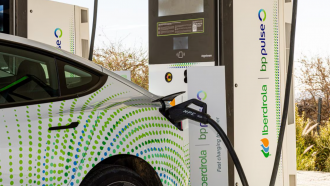In a study on the recent trends in sending texts on Instagram, it was found that almost half these texts are mostly made up of emojis. Such texts are usually captions, comments and hashtags that have recently become capable of being represented by emojis.
The study is authored by Thomas Dimson, a software engineer known to have concocted the Hyperlapse app in Instagram. Dimson noted how the so-called digital language has evolved from the time the emoji keyboard was added to iOS for international use (October 2011) to that time when emojis became adopted on most Android platforms (July 2013).
"In the month following the introduction of the iOS emoji keyboard, 10 percent of text on Instagram contained emoji," said the team from Instagram Engineering. "The trend continued until the release of Instagram for Android in April of 2012, when many new users did not have emoji support. Afterward[s], there was a clear upward trend which accelerated after Android received native support for emoji in July 2013."
In other words, the upward trend in using emojis became more apparent after the introduction of emoji keyboards on iOS and on Android.
Dimson also came up with some definitions for emojis that he also ranked based on popularity or frequency of usage. By using algorithms and "contextual" interpretation, Dimson was able to produce definitions using the English language.
"It is a rare privilege to observe the rise of a new language," said Dimson. "Emoji are becoming a valid and near-universal method of expression in all languages."
The most widely used emoji is the one that's dubbed as "smiley face," which people use when saying things such as lmao, lolol, lolz, lololol, lmaoo, lmfao, lol, lolololol, ahahha, ahahah, ahaha, loll, lmfaoo, ahah, lmaooo, ahha, lollll, loll, ahhaha, ahahaha, lmfaooo and lml. In Instagram, these symbols are starting to represent former popular slangs on the Internet such as OMG and LOL.
Dimson also ranked countries according to their usage of emoji. Occupying the top spot is Finland, which uses emoji characters in their text messages by up to 63 percent. It is followed by France (50 percent), the UK (48 percent), Germany (47 percent), Italy and Russia (each at 45 percent). In the U.S., Instagram posts are found to have emojis in texts and captions by up to 38 percent. The country that was placed on the lowest ranking is Tanzania, as only 10 percent of texts and captions feature emojis.
Now, people are comparing the way emojis are used in the present world with how Egyptians were using hieroglyphics in ancient history. There is speculation that, in the future, the written word will totally be replaced with emojis.
Photo: downloadsource.fr I Flickr









